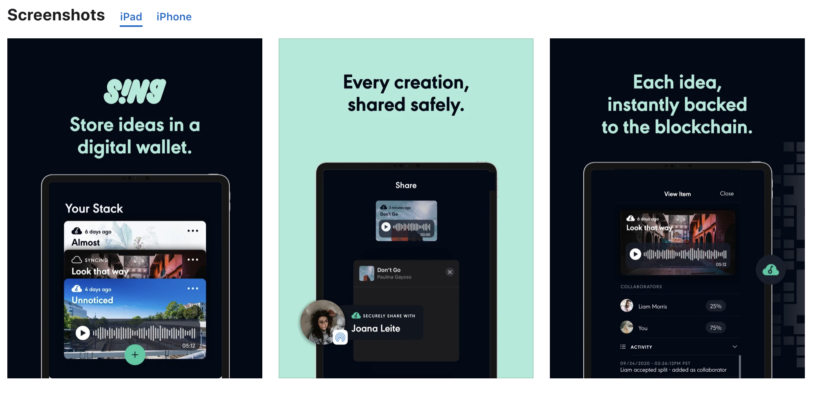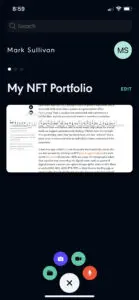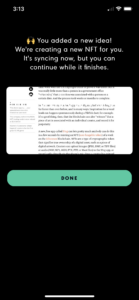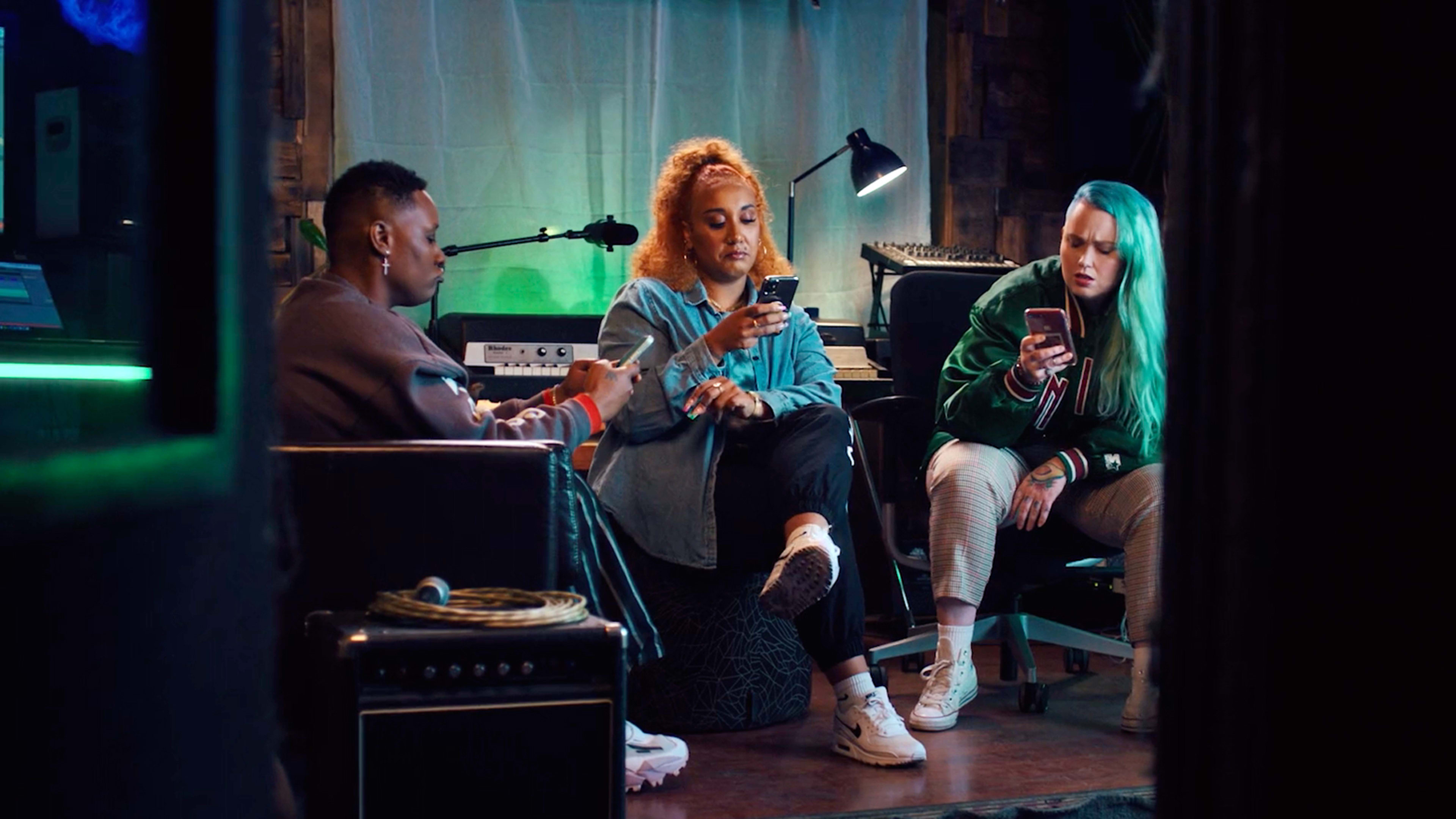Musicians and visual artists have long registered their work with the U.S. Copyright Office to prove it’s theirs. But doing so is really little more than a person in a government office “witnessing” that a creation is associated with a person’s name on a certain date. And the process takes weeks or months to complete.
In the 21st century, creation happens on digital platforms. It happens far faster than ever before, and in many ways. Inspiration for a vocal line or a beat can happen spontaneously during a TikTok duet, for example. A GIF can be created on a phone and uploaded to social networks. It’s a good thing, then, that the blockchain can also “witness” the creation—and the creator—of a digital thing, and record it for perpetuity.
A new, free app called S!ng lets pretty much anybody do this in a few seconds by minting an NFT (nonfungible token) of a work on the Ethereum blockchain. An NFT is a type of cryptographic token that signifies true ownership of a digital asset, such as a piece of digital artwork. Creators can upload images (JPEG, BMP, or TIFF files) or audio (WAV, MP3, MIDI, PTX, PTF, or M4A) to the S!ng app, or record audio directly via the phone’s microphone. Once creators have minted an NFT for their work, it can be sold or licensed to others online if there’s a market for it. There is no minimum or maximum price that creators can ask for their NFTs.

So how does the app make money? The company intends to keep building its user base for now. Later it may charge users who want to upload large files, or who want storage options for their NFTs. There will also be a marketplace, and creators will be charged for participating there.

Maida tells me that one of the main reasons he got involved is because he wanted his budding musician son, 16-year-old Rowan, to have a solid way to protect his music ideas—some of which were being hatched on TikTok using the app’s “duets” feature.
“We’re literally living through the problems of not having some sort of simple copyright mechanism, and this is becoming much more of a concern with the way creators are now,” Maida says. “They’re creating beats on all these different platforms, trading stuff. You look at any hip-hop song, there are 10 people on it.”
Osler worked in software product licensing at Apple before working at Adobe and later cofounding ClearSign, which makes clean emissions tech for the energy and chemicals industries. One of his responsibilities at ClearSign was making sure the company’s inventions were patent-protected, where he says he “got a front-row seat to the dysfunction of the invention process.”

But with the help of some smart friends in the creative world, he soon saw an opportunity to pivot toward protecting music and art using NFTs. Protecting corporate IP and creative IP aren’t so different, he says. “Same issues, right? You’ve got a group of people collaborating, and you’ve got the absolute need to carefully document that stuff so that if it ever gets disputed, you’ve got a clear chain of custody for exactly how that idea came to be.”
In addition to Maida, Osler also got input to form the new venture from photographer Chase Jarvis, VP of A&R at Epic Records Ericka Coulter, musicians including DJ Nu-Mark and Rasta Root, and producer Jake One.
Point, click, mint
Using S!ng is pretty easy. I downloaded the app to my iPhone, opened it, provided my email to create an account, and was ready to start minting NFTs in about five minutes. For kicks, I minted an NFT for this very article (the bidding starts at $10,000, or 5.51 ETH). There’s no way to actually look up your NFT on the Ethereum blockchain; you have to use another app to do that.
Osler and Maida believe that when the hype cycle around NFTs expires, sales prices will come back down to Earth.
There’s presently a lot of hype around NFTs, and a lot of misconceptions. When collectible NFTs of digital art pieces, tweets, and sports highlights are selling for exorbitant prices, you’d be pardoned for suspecting that people are assigning value to the novelty of NFTs themselves, not to the quality of the work they represent. Osler and Maida believe that when the hype cycle around NFTs expires, sales prices will come back down to Earth, and what’s left will be a digital currency with real utility—in this case for “witnessing” ownership of a digital work.
Recognize your brand’s excellence by applying to this year’s Brands That Matter Awards before the early-rate deadline, May 3.
